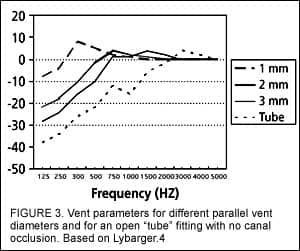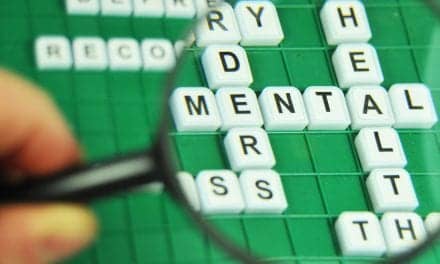Audiologist and author Craig A. Kasper talks with Hearing Products Report about the importance of providing preventive hearing health care to patients, especially in the age of personal listening devices. Kasper is the director of audiology for the New York Otolaryngology Group, and codirector of the New York Tinnitus Center. His clinical interests include preventive hearing health, tinnitus, and emerging technology. He can be reached at [email protected]

A The term “expert” always makes me laugh! The more understanding I gain, the more I realize how much I need to learn. When I began my clinical career a short 10 years ago, I could not beg patients to come in for preventive hearing health services. With respect to my current patient base, I’d say approximately 35% of my patients are coming to me seeking out services to preserve auditory function. This includes consultations for touring and local musicians, music industry professionals, and the general population looking for better options for their mp3 players and portable media devices.
Q What are the positives for a practice to develop a niche specialty?
A For me, working with music industry professionals and others to preserve hearing provides an enjoyable break from the standard, diagnostic clinical routine. It is rewarding to work in a proactive manner with patients on an issue that can be seriously life altering and, in some cases, career ending.
Developing a niche specialty allows clinicians to differentiate themselves and work on building their practices. I’ve been able to accomplish this by spending time educating the general public regarding hearing health. It also has provided me with an avenue to maintain contact with my current—and prospective—referral sources. When I encounter conditions that might call for treatment outside of my scope of practice, I have a network of professionals to refer to. They, in turn, see me as the go-to guy when patients have concerns regarding their hearing health.
A bonus is being able to work with some very interesting, and often famous, people.
Q How does your care for a typical music fan differ from your care for a professional musician?
A An interesting thing has developed in recent years: Much of the in-ear technology that musicians have used on stage for a long time has now trickled down to the consumer market. With the explosion of portable media devices, many music enthusiasts are in search of the best in-ear options. So, it’s really not much different. For both groups, education forms the foundation. Audiological evaluation and annual reevaluation are also recommended. When it comes to in-ear products, many music fans are looking for custom musicians’ hearing protection, custom sleeves for their headphones, or in-ear monitors. These are the same products my music industry patients are looking for. The key is guiding both groups toward the safe use of these products.

A That is the million dollar question! How do we convince younger people to be proactive about their health in general? There is a feeling of invincibility we have all experienced at some point in our earlier years. I do believe this is where the public education efforts really need to hit early in a young person’s life. Groups such as Kathy Peck’s Hearing Education and Awareness for Rockers www.hearnet.com , and other efforts by our professional associations, [such as] the American Academy of Audiology www.audiology.org, the American Speech-Language-Hearing Association www.asha.org, and the National Hearing Conservation Association www.hearingconservation.org , are doing a great job. In addition, what is needed is a public education campaign that is developed by a clever marketing group with experience pitching products to the younger generation. Hearing preservation has to be as trendy as iPods and packaged accordingly.
Q Besides the potential for hearing loss, there is also a risk of developing tinnitus. Has that been overlooked in all of the focus on noise-induced damage?
A I tend to agree with you. Hearing loss is the foundation issue, but we need to publicly discuss the related issues, such as tinnitus and sound sensitivity issues. It is really a package deal. For example, almost everyone will experience a temporary decrease in hearing and increased awareness of tinnitus following a loud concert or performance; that is, if they’re not protected. The educational efforts should address prevention and management for both.
Q In your book, The Simple Guide to Optimum Hearing Health for The mp3 Generation, you detail steps users should take to safeguard their hearing when using personal music devices. Would you share some of those tips with us, both for protecting hearing and protecting against developing tinnitus?
A I think we’re really at the very beginning of truly understanding how we can help the general public safeguard their hearing. There are so many potential threats of varying degrees, so I do not claim the book is the be-all and end-all. In fact, my primary goal was to put an easily digestible book out there to simply plant a seed in the collective consciousness.
There has been a great deal of information—and misinformation—in the past year regarding safe listening levels and portable mp3 players. An accessible source was needed so people could understand what they should do to start on the path to saving their ears.
Our understanding of the issue is morphing just as quickly as the manufacturers are releasing new devices. The book was released in April 2006, and new information is now surfacing regarding the output of various devices. As professionals, we need to stay on top of this issue and present the most updated research findings to our patients and the public.
As a starting point, I suggest the consumer market follow similar guidelines that those in industrial settings have been mandated to follow: obtain a baseline audiological evaluation, educate themselves regarding the threats, utilize appropriate in-ear devices, gain an understanding of their output or attenuation characteristics, be aware of exposure levels and time of exposures, and undergo annual reevaluation or sooner if they notice something strange.
I also suggest that people follow a healthy diet and lifestyle. Finally, I believe the concept of mindfulness plays an important role here. If people are in touch with their hearing, really appreciate it, they will be more inclined to take the necessary steps to protect it.
Q What products do you recommend to professional musicians and performers to protect their hearing? What about products for music-lovers, the non-professionals?
A For music industry professionals as well as music enthusiasts, I often recommend the same types of products. When it comes to the basic issue of “protecting hearing without changing the way music sounds,” I always suggest a flat-attenuation hearing protector. This can be purchased in a one-size fits most generic plug—initial outlay of money is minimal—or a custom, medical-grade, silicone version—a bit more expensive at the outset, but a good long-term investment. When musicians are looking at in-ear monitors for on-stage use, I spend time understanding their needs and discuss the various products available.
Regardless which option they choose, I make sure they walk out of my office with a solid understanding that IEMs are NOT hearing protection. IEMs might serve to reduce overall levels on stage, when used appropriately, but they still have the potential to cause auditory damage. This is a very important point to share with not only musicians, but also music enthusiasts using IEMs or other sound-isolating earphones with their mp3 players.
Q There is a debate about whether the individual listener or the devices’ manufacturers should hold the brunt of responsibility to protect hearing. What is your position in the debate?
A Considering the recent lawsuit filed against one particular mp3 player manufacturer, I’ve given this subject a fair amount of thought. The manufacturers have a definite responsibility to educate the folks who purchase their products regarding safe use. This information should be front and center, as opposed to being one small statement buried in an owner’s manual. The other side of the equation is the professional hearing health community’s responsibility to work independently, as is being done, and in collaboration with industry to educate the public. That said, I believe the ultimate responsibility lies with the consumer.
It boils down to this: Music/noise-induced hearing loss is similar in some respects to overexposure to the sun or smoking; after years of public service announcements and research studies, most people now know the dangers, but they still pass on the sun block or light up another cigarette anyway. The reality is that people are going to listen to their mp3 players at potentially dangerous levels. We cannot police the actions of every person using an mp3 player. All we can do is try to educate them and guide them in the safe use of these devices.
Q Besides caring for their patients’ hearing loss, do today’s audiologists discuss preventive hearing health enough with their patients? What more can be done?
A The concept of preventive audiology is definitely a long-term investment in a patient base. Personally, I’m of the mindset that we should talk to all of our patients about the concept of auditory longevity, regardless what stage of life or degree of hearing loss they present with. The focus should always be on preservation of existing function for as long as possible.
Q Noise-induced hearing damage is not a new concept to hearing health care professionals, yet the public in general doesn’t always seem too concerned with preventive hearing care. What are some of the misconceptions the public still has about noise-induced hearing loss?
A Although we know it can be a life-altering disorder, prevention of hearing loss seems to get lost in the shuffle of prevention of life-threatening disorders, such as diabetes, cardiovascular disease, etc. Hearing loss, despite the fact it has been shown to affect the quality of life, is not likely to shorten your life. This might be the primary reason why it is not at the top of everyone’s list when they go for their annual physical exams. I do see this changing though. People want to live longer and healthier lives. Healthy hearing seems to be surfacing as an area that more people are paying attention to.
Q Is there any other advice you would give to audiologists about the hearing health of their patients?
A Think about the preventive side of the equation. It is an often overlooked component of audiology practice, but it is a critical service we should provide to our patients and the world.





